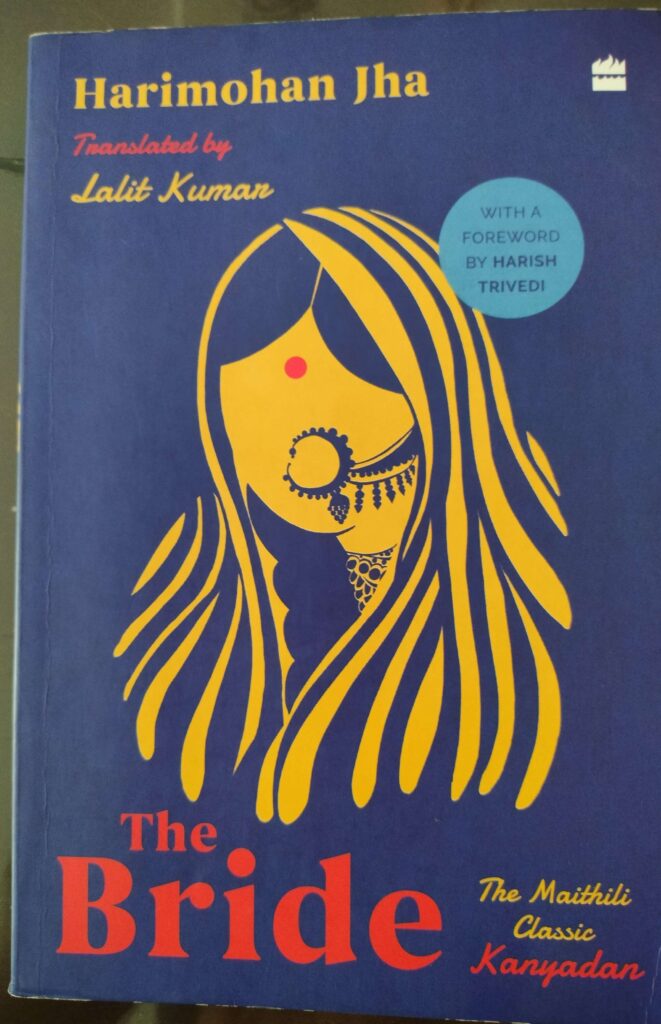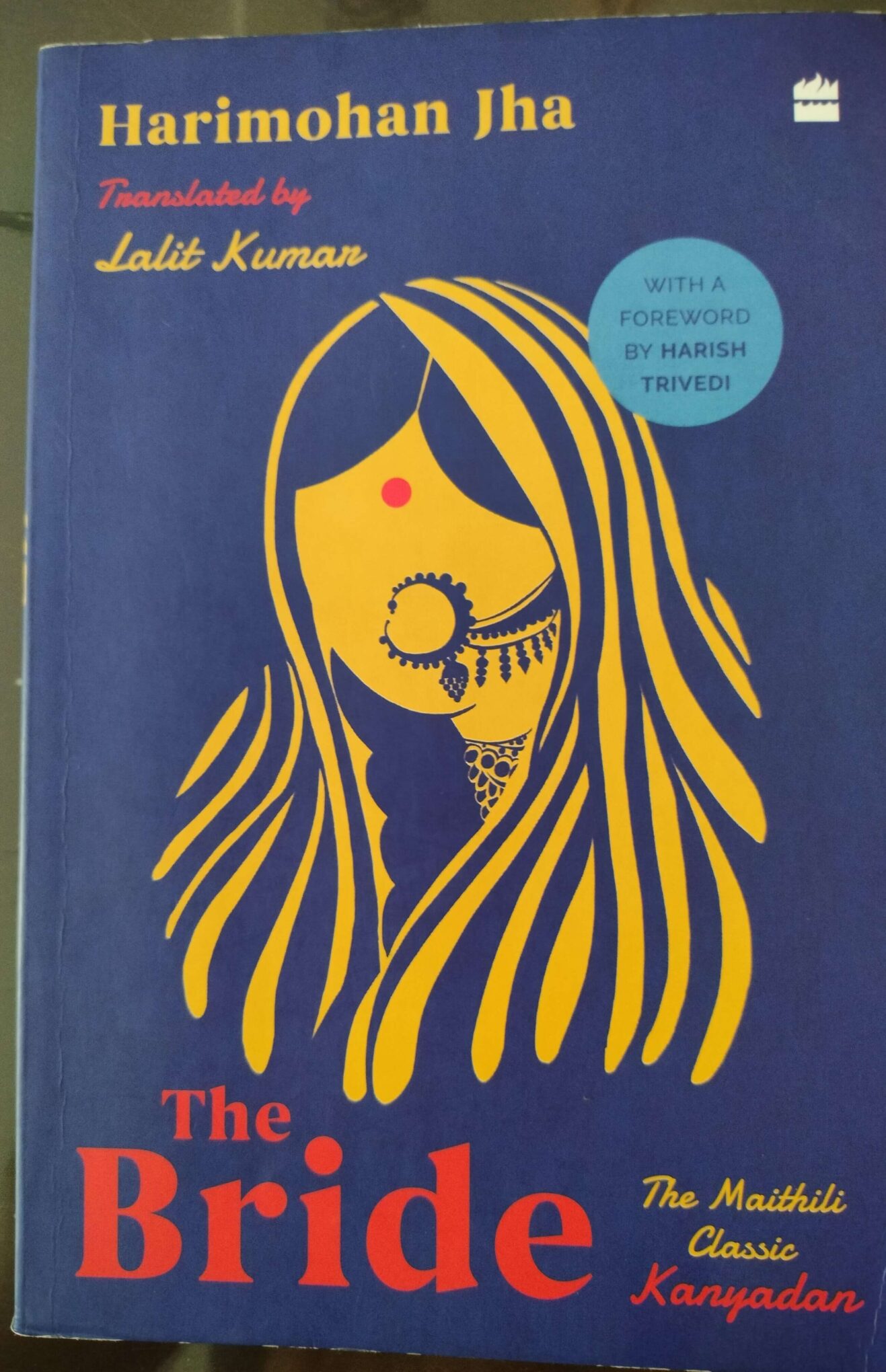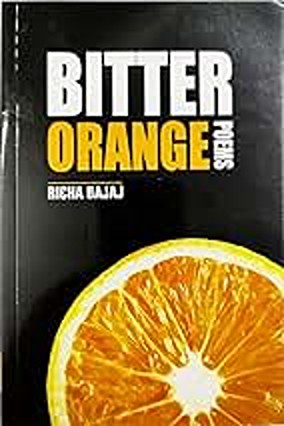Lalit Kumar’s translation of Harimohan Jha’s “Kanyadan” into English, “The Bride,” shows how translation conveys cultural works to readers unfamiliar with the original language or culture. In a globalised society, cultural identities must be preserved and represented, deliberates Prof Nandini – an exclusive for Different Truths.
How do we define translation? In its numerous connotations, it is an exposé of a text into another language, perhaps in the ways the original author had intended. Translation theorists tell us that translation must be simple so that the clarity and precision of the original text are carried forward in the translated text. On the other hand, this may be seen as a complex, simulated, and counterfeit art, since by using another language, one envisages to be someone he/she is not.
Most people assume the translation is about making a replica of the original.
Most people assume the translation is about making a replica of the original. However, this is hardly the objective, as no two works of art can mirror images of one another. But translation empowers the translator to be a bridge between two languages, two cultures, two communities and, by extension of the argument, two worldviews. In that sense, it enables the translator to create something entirely new. At the same time, because translation does not mean the reconstruction of lexicon after lexicon, it is also a liberating exercise. It endows the translator with considerable autonomy.
The exercise of such autonomy may amount to, in some cases, the introduction of chapter titles where those are missing. Such interventions may also lead to correcting typological errors, revising narrative flows/chronology, renaming the title, or inserting correct references. In other words, the translator is bestowed with the ‘power’ to be a cultural ambassador—an ambassador not of one but two cultures. This is the case with the book, The Bride, translated by Lalit Kumar and published by Harper Perennial with aplomb.
My dialogue in this research is to deal with the issues related to the translation of The Bride with the limelight on the following points:
- Translation as a mode of representing pan-Indian identity through Harimohan Jha’s Kanyadan, translated as The Bride
- Glitches of translation of a signature/cultural text like The Bride–linguistic, cultural, semantics and lexical
- Language functions vis-à-vis the translated text
- Translation of The Bride: bringing home the culture
- Translation as ‘automatic writing’ by the translator, Lalit Kumar
Harimohan Jha is one of the most popular authors of modern Maithili literature, known for his satirical writings.
Harimohan Jha is one of the most popular authors of modern Maithili literature, known for his satirical writings. Born in the Bajitpur village of Vaishali district of Bihar, he studied English literature and philosophy at Patna University and later became a professor of philosophy. He was a prolific poet, novelist, satirist, critic, and crusader against all sorts of superstitious practices. Jha was celebrated as the ‘Vidyapati of modern Maithili prose’ and won the prestigious Sahitya Akademi Award posthumously for his autobiography Jeevan Yatra [The Journey of My Life]. However, his fame rests on his first novel Kanyadan (1933), which was first serialised in a Maithili periodical called Mithila. Translated as The Bride by Lalit Kumar, it is the first-ever translation of a classic Maithili novel into English. On the one hand, several novels written during colonial times in languages such as Hindi, Urdu, Bengali, and Odia are available in English translation.

On the other hand, not even a single classic novel from Bihar was brought out in English translation. The present translation has tried to bridge that gap by making this Maithili classic accessible to non-Maithili readers who will savour the description of Madhubani paintings, the clouds and the rain, the wedding songs, and above all, the robust Maithili humour. Apart from these, the novel can also be read as a historical document to understand how colonial modernity affected people’s lives in Bihar The Bride has many references to modern education, English-educated youth, khadi, and Maithili script. Still, its primary concern is female education and ill-matched marriages. The novelrepresents the social taboo against women’s education in early twentieth-century rural Mithilanchal, in fact, the entire India of the given period.
Harimohan Jha ventured to write a pan-Indian story on seminal subjects like the plight of a girl child, women’s issues, education, gender issues, patriarchy, social anathemas, public perceptions of women’s identity politics, the storyline being of a profoundly emotional human relationship – when, probably, no other writer in Indian literature had even conceived such a complex plot.
The Bride is a reformist novel, a part of ‘Witness Literature’, if I may. The protagonist represents a society based on a collective traditional belief system where ethics regarding women’s role was historically entrenched in specific socio-cultural constructions. Through this molten, breathlessly told tale of a girl named Buchia, Harimohan Jha has exasperated his intentions to authorise liberation to Maithili womanhood, and Lalit Kumar has aptly brought it to the notice of the readers through this translated book which rather reads like an independent book. The biggest irony of translation theory is that a successfully translated text should not read like a translation; rather, it should read like an original work. Lalit Kumar engages with translation as ‘automatic writing’ if I have the liberty to go Yeatsian here.
The novel revolves around the bride, who is ‘no sooner married than abandoned.
The novel revolves around the bride, who is ‘no sooner married than abandoned.’ (Foreword, Professor Harish Trivedi). The text has been written in the pan-Indian context and problematises a ‘companionate marriage’ (Foreword). Lalit Kumar is faithful, like the author Harimohan Jha, a ‘critical insider’ who carries forward some of the novel’s concerns in his enriching Introduction. To quote Professor Trivedi, “These included the denial of education to girls, child marriage, the giving of dowry, and incompatible marriage of a bride either to a young man who was college educated and thus alienated or to an old man who was often widowed or bigamous. Another major issue was the Hindu Religious Prohibition against widow remarriage which left many girl widows condemned to lifelong deprivation of any personal gratification or social status, in many cases even before they had reached puberty.” (Foreword)
To genuinely appreciate the professional translation of Lalit Kumar, Professor Trivedi writes, “For example, when the bridegroom lifts the bride’s veil, he expects to see a ‘real peach’—an idiomatic English phrase used by Lalit Kumar, which surely matches or even exceeds whatever Maithili phrase Jha might have used. On such evidence, this seems to be a peach of a translation and should help the novel win a new generation of readers.” (Foreword) The novel’s primary concern is ‘the yawning gap between the education of boys and that of girls.’ (Lalit Kumar: Introduction 7). Set in rural Mithila in the 1920s, The Bride narrates the story of an English-educated young man, Chandi Charan Mishra, who comes to a small village to marry his friend’s sister. Kumar writes:
Educated at Banaras Hindu University, Mishra is cut off from the ground realities of rural India. His worldview is forged by reading English books and watching Hindi films. As a result, he wants his wife to be a good orator, poet, singer, writer, tennis player, artist with a good sense of humour and, above all, as beautiful and elegant as the film star Devika Rani. But he is duped into marrying an illiterate country girl. His dreams are shattered when he sees his wife, Buchia, an uneducated and unsophisticated village girl. He decides to run away from the village quietly the night they meet. The immature girl and her mother are in tears, whereas the jealous villagers rejoice. This gap between the expectations of an English-educated groom and the realities of the village becomes a significant source of humour in the novel (Emergence of Novel in Maithili, 111).
During Harimohan Jha’s period, Mithilanchal had become culturally stagnant…
During Harimohan Jha’s period, Mithilanchal had become culturally stagnant, and it witnessed the fecund superstitious, complex, callous rituals, and women occupied a low status in medieval and early modern society; therefore, Jha took up the challenge of attacking the orthodox segments of Mithila and became an ardent advocate of women empowerment. The irony stems from the fact that the land of Mithila was traditionally known for producing female scholars such as Sita, Gargi, Bharati, and Lakhima Thakurain. And in colonial times, women were the “other” and consigned a subordinate position. Only 1.3% of women got the opportunity to study in Mithilanchal at that point. Counter to this ungainly backdrop; the British occupied Mithilanchal in 1803. The despondent state of women got a rhytidectomy with Western humanism and English education. One must be grateful to Thomas Babington Macaulay’s minute of 1835 and Henry Rickets, AJM Mills, GF Lockburn and TE Ravenshaw, who have contributed toward the spread of education. With their concepts of tolerance, logical insolence and free-thinking, the age-old levies of patriarchy were put to serious enquiry. The upward prominence of education and teaching of Western ideas, and the actions of Christian missionaries, facilitated the people of Mithilanchal to re-evaluate their ingenuousness. With the emergence of British rule in Mithilanchal, secular schooling was carried forward, and spiritual objectivity was sustained. The Bride is the story of introducing women’s education in Mithilanchal.
From a Masculinity Studies standpoint, I am tempted to look at the character of the writer himself, Harimohan Jha, where a man takes responsibility for the construction of the female characters in the plot. The author is a feminist, like Rabindranath Tagore, Fakir Mohan Senapati and Premchand. Buchia, the bride, was not just involved in formal education; even before any formal education, she had acquired comprehension to learn Maithili books and had a commendable fortitude to learn. The eagerness, energy, and jubilation of Buchia are not accepted by conventional society.
Harimohan Jha is a social analyst, crusader, and artist of complex thoughts…
Harimohan Jha is a social analyst, crusader, and artist of complex thoughts, and he problematises the complex human and social issues in the plot. Buchia faces the starkest disparagements of society. People create a cocoon around her with their delusions about women’s education. One can even find a vicious circle of female patriarchy in the plot. Some women characters personify the inconsiderate world to restrain Buchia from the liberating encirclements of modernity. As the lone voice against the social taboo, the bride endures numerous trials and tribulations. She withstands humiliation and indictments in her passion for achieving social solidarity. It is a thought-provoking memorandum that the vanquished and the victimiser are women in many cases. Yet, it does not reduce the austerity of women’s subjugation in this plot. On the contrary, it inclusively elucidates the problematics of feminism.
Harimohan Jha’s social critique postulates the bride as caught between modernisation and a tradition that thwarts her ambitions and holds her accountable for contravening her responsibilities as an Indian woman. The vivacious girl who was once not frightened to be vocal about her desire for education is unexpectedly muted at a certain point. As a subaltern woman, she disappears from the centre and is consigned to the margins of her little world. She has pugnaciously ferried between nature and culture and shoulders the exiled character of the silent third-world woman who ‘cannot speak’. Answerable for things beyond her control, the bride moves away from life. She is not allowed to disappear into primaeval oblivion. Instead, she lives in a painful vacuum as an object of challenging treatises of the time till it silences her. The challenging discourses in this historical framework denote Western humanistic rationalism in contrast with non-Western Maithili culture with its intrinsic canon. The bride’s destiny is unquestionably catastrophic, but the implication of what it couriers in its plot and character has a moral upshot for the contemporary reader. The bride raised her voice when she was vocal and through her silence and tears. Her silence inquests, even today. Precisely, she created solidarity in sisterhood.
The paradox is that the bride forsakes all her dreams of emancipation and falls prey to an unreasonably predominant scheme…
The paradox is that the bride forsakes all her dreams of emancipation and falls prey to an unreasonably predominant scheme that she does not comprehend and accept. But that was the situation of pre-colonial Mithilanchal. The bride’s story was relevant and timely, which is what Lalit Kumar discusses in his engaging and academic Introduction. Apart from the complex issues related to gender, Kumar also problematises caste and points out that the author approaches the institution of caste through irony and humour. To quote him, “Kulin Brahmins sometimes misused this position of social superiority and married several times into the families considered socially inferior to them. Unlikely as it might sound, there were instances of one Kulin Brahmin taking as many as thirty wives. However, such practices existed outside Mithila too—in Bengal and Assam, though further research is required to identify their similarities and differences.” (Lalit Kumar Introduction 11)
Kumar handles the humorous tone and satirical undertones throughout the text, and these are the unique features that make his book an independent reader, like ‘automatic writing.’ Lalit Kumar makes the best of translation by maintaining and retaining colloquial expressions while he problematises the social implications of different types of marriage:
‘O exalted one, why didn’t you tell me this beforehand?’ He asked, salivating. ‘Here at Sabhagachhi, we receive all sorts of marriage proposals. The first is called a khankhanoua wedding, where the coins pour out from the hands of the groom’s father, producing a khankhan sound. Simply put, the bride’s family get plenty of cash. The second is known as a tantanoua wedding, where the groom’s father feels tantan or ecstatic on receiving one thousand rupees from the bride’s side. And the third is a thanthanoua wedding where both the parties are than-than or paupers, and they get nothing from each other. Well, you see, I assumed that you would go for the first. Many men come here wearing a dirty paag like yours and give girls in return for money. How could I have known that you were here to pay the groom? But now that I see you belong to a well-to-do family, rest assured that I will find you a suitable groom. Count yourself fortunate because, as it happens, one such proposal is up for grabs in Sabhagachhi today. If this alliance is fixed, consider the girl lucky.’ (The Bride 56)
Here the novelist, through irony and humour, launches a scathing attack on ill-matched marriages.
Here the novelist, through irony and humour, launches a scathing attack on ill-matched marriages. Further, he gives a counter-discourse through gentle humour and satire to the gender binaries presented by a hegemonic society in the following lines:
‘Forgive me, please’. The girl cooed like a dove amid the ear-piercing sound of the chorus and added, “Four centuries, selfish men have led helpless women by the nose, forcing them to dance to the runes. I have avenged the wrongs of women. And therefore, I resolved to grasp the man who wanted to marry me by the nose and lead him to the ceremony. Only then may I have friendly conversations with him. I hope you won’t object to this.” (The Bride 127)
There is also an interesting discussion in the text about bride price when Mukund narrates his story of betrayal and embarrassment by a girl’s family:
“A girl’s family from Juranpur approached me at Sabhagachhi. The marriage was settled for forty rupees. I spent two rupees extra to get the genealogy prepared. Just before we parted, they asked me for money. I ungrudgingly gave them the forty rupees, as promised. But unfortunately, a one-rupee coin turned out to be counterfeit. By then, I had run out of money. So I tried to persuade them that I would pay one rupee later. I was the groom. But all my pleas fell on deaf ears. In the end, a widower from Majhoulia paid them forty rupees. The girl’s father happily accepted him as a son-in-law. I kept watching helplessly.” (The Bride 60-61)
Harimohan Jha’s The Bride is a timeless achievement, and Lalit Kumar makes it a part of world literature with this seminal and pertinent translation. He does complete justice with the book. This story is an allegory for enlightenment and liberation. He creates an icon of the renaissance whose wretched tone is beyond our judgement. The Utkal Mahila Conference held in Berhampur in 1924 by a group of women, including Reba Ray, Sailabala Das, Kuntala Kumari Sabat Sarala Devi, Rama Devi and Malati Devi, made their seminal contributions to revolutionising the Indian society vis-à-vis women’s education. Harimohan Jha and Lalit Kumar have created a masterly appraisal and shared pragmatism for those women’s causes through this book. They were, if I may, ‘The Bride’s Sisters’ in solidarity with their commitment to education. I won’t suggest that they particularly emancipated society to the fullest, but they challenged the gender dichotomy and carried forward the bride’s spirit towards social reform.
This book, The Bride, locates the female protagonist in the convinced shades of Indian and world languages, cultures, and people…
This book, The Bride, locates the female protagonist in the convinced shades of Indian and world languages, cultures, and people and contextualises the reconstruction of Maithili identity. The book is a loud and clear attempt to introduce Maithili’s gender and social discourses to contemporary world readers as a multi-layered text. It antedates the postcolonial reading to bring out its contextual significance from various angles by translating a signature text of Indian literature. The translator Lalit Kumar becomes a part of history with the publication of this book. This book, undoubtedly, is his labour of love. Putting so many ideas and debates together, contextualising them, and giving them coherence and cohesion is challenging.
According to Dr Johnson, the translation process is to ‘change into another language, retaining the sense’, which is indeed the fundamental objective of this book. The translator has interpreted the text under broad-spectrum heads, including the title, the organisation, the paragraphing and sentence connectives, shifts, metaphors, cultural words, proper names, neologisms, so-called untranslatable words, indistinctness, meta-language, puns, sound-effects, alliterations, assonance, onomatopoeia, symbols, allegory—and assessed the whole to accomplish precision. He also admits having taken some liberties in his attempt to strike a delicate balance between originality and readability. I reckon there is a bright future for this translated book. The reader has to decide what kind of authority the translated version of The Bride has on the language, the literature, and the ideas in its new locale. The Preface and the Introduction are essential; they successfully attempt to consign this translation to a foreign atmosphere and interpret the text linguistically and culturally. The book’s future depends on its availability and accessibility in foreign languages, Indian language departments, universities, embassies, and cultural centres. The book will appeal to everyday readers and be immensely useful to students of Indian literature, anthropology, sociology, and gender studies.
Works Cited
1. Lalit Kumar. The Bride (Maithili Classic Kanyadan by Harimohan Jha). Harper Perennial, 2022.
2. — “Emergence of Novel in Maithili and Harimohan Jha’s Kanyadan“. Indian Literature, May-June 2022 # 329, Sahitya Akademi, New Delhi.
- Eugene A. Nida. Towards a Science of Translating, E.J. Brill, Leiden, Netherlands, 1964.
- Gideon Towry. Descriptive Translation Studies, Benjamins Translations Library, 1995.
- Basil Hatim. Teaching and Researching Translation, Longman, 2001.
- Daniel Gile. Basic Concepts and Models for Interpreter and Translation Training, INALCO and ISIT, Paris, 1995.5.
Cover image sourced by the reviewer.





 By
By
 By
By
 By
By
 By
By